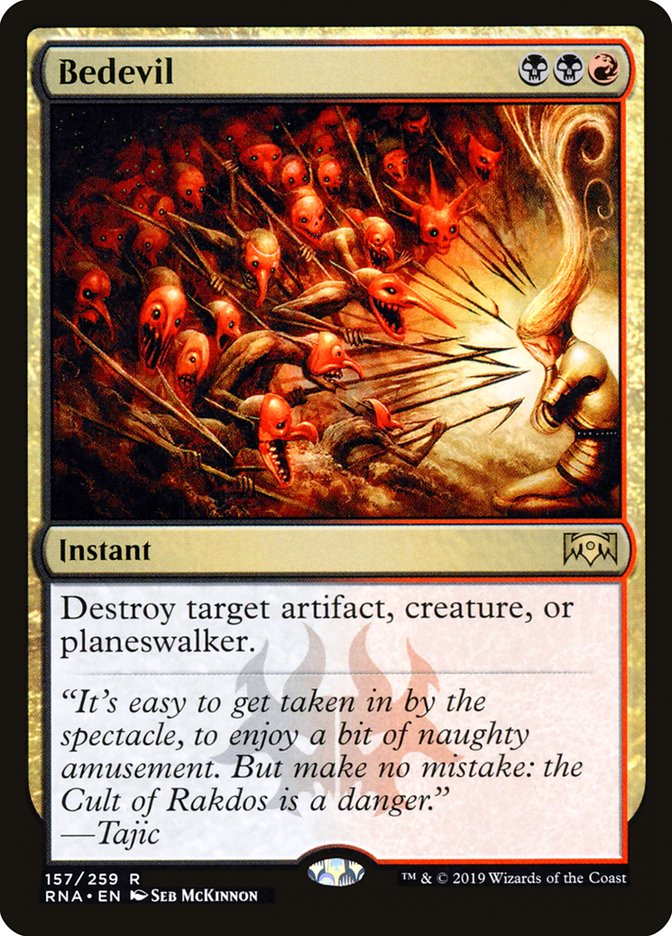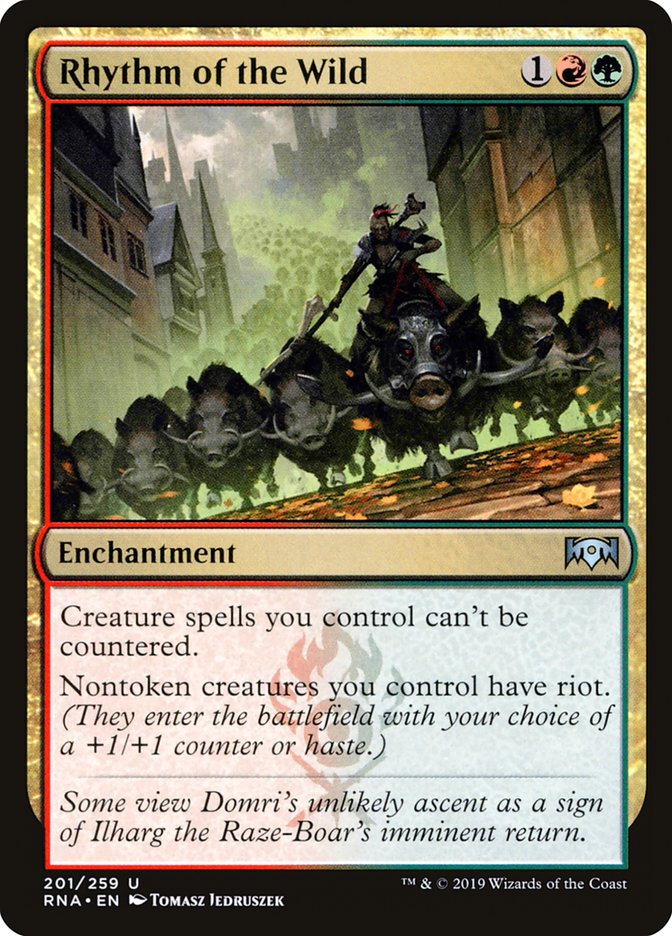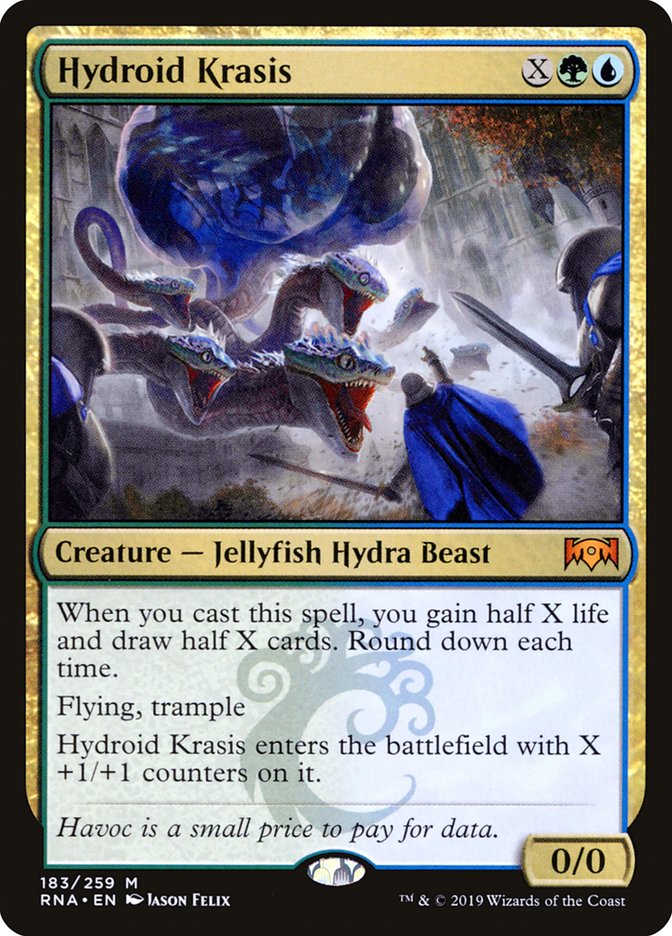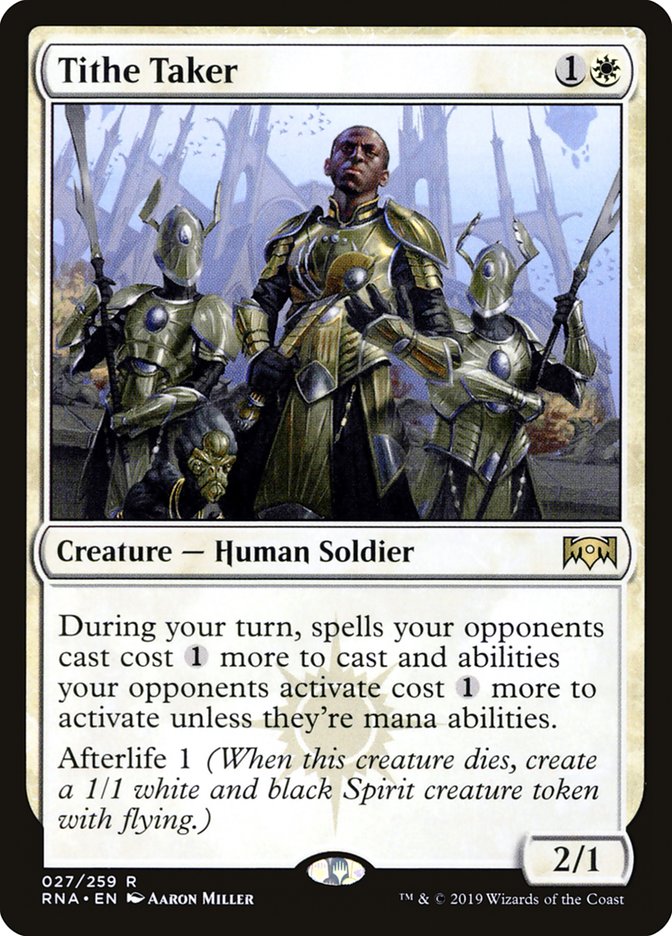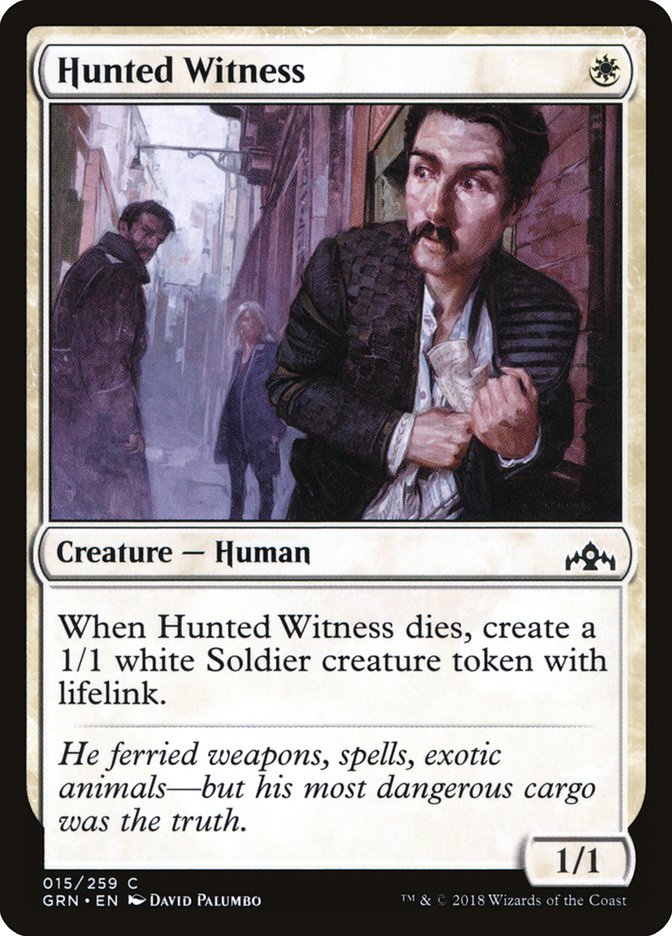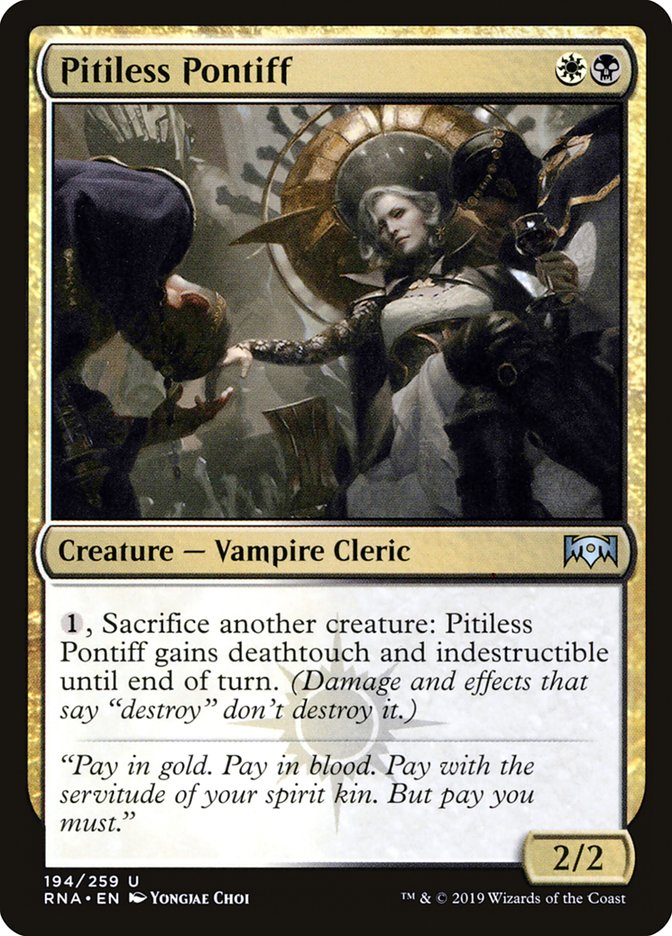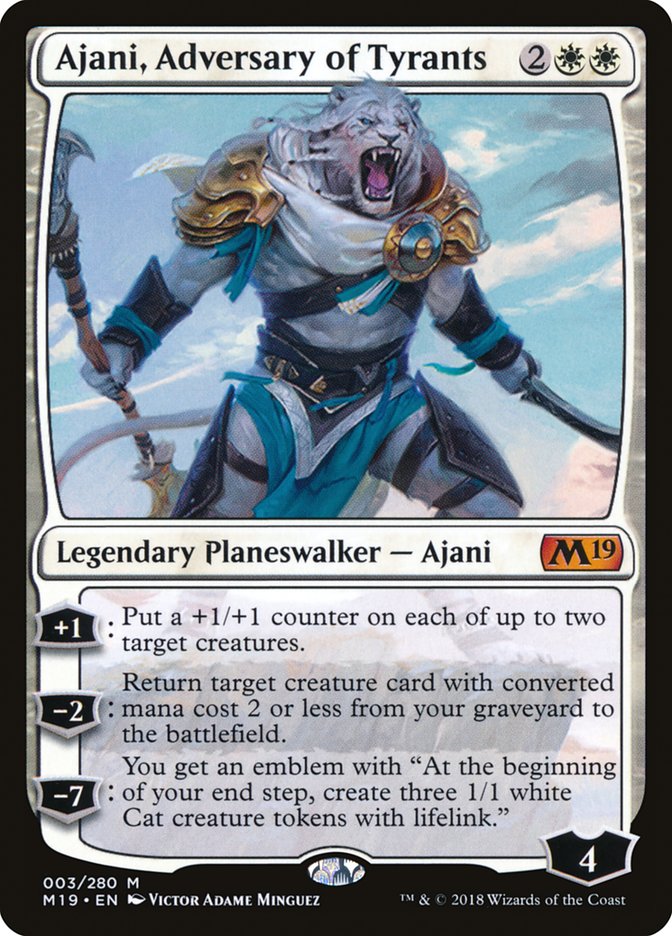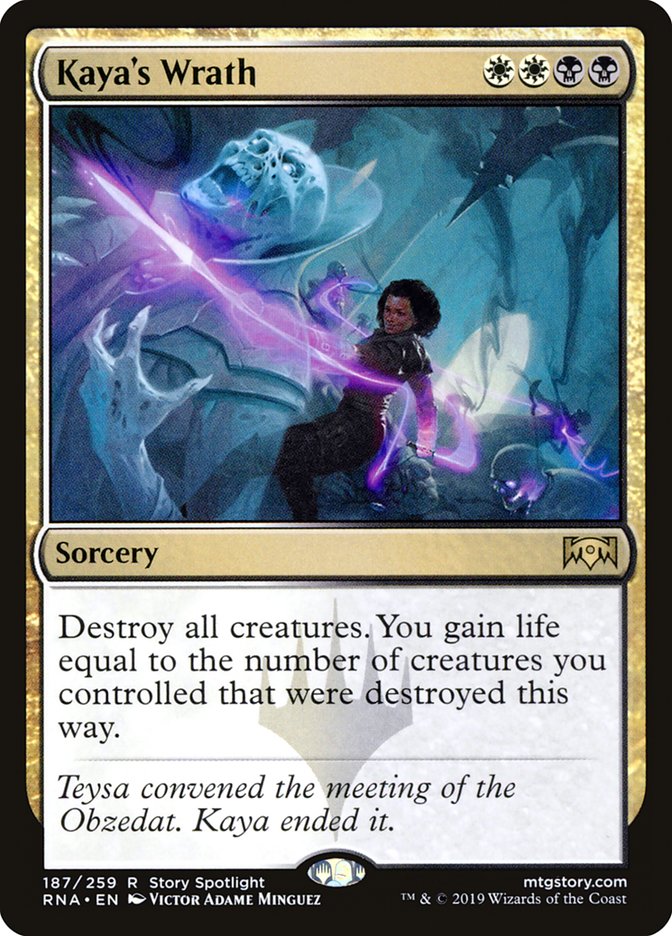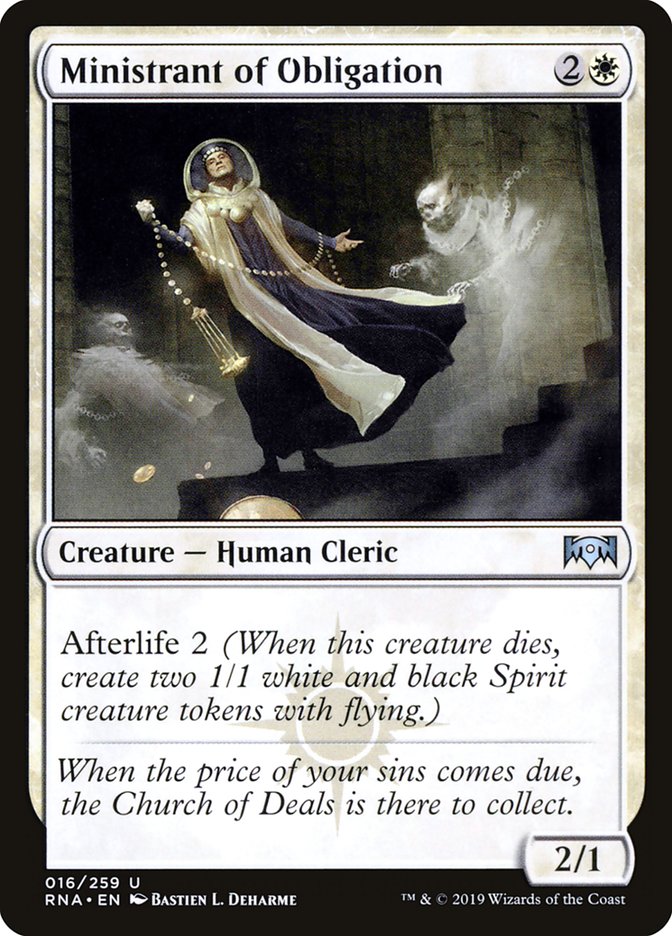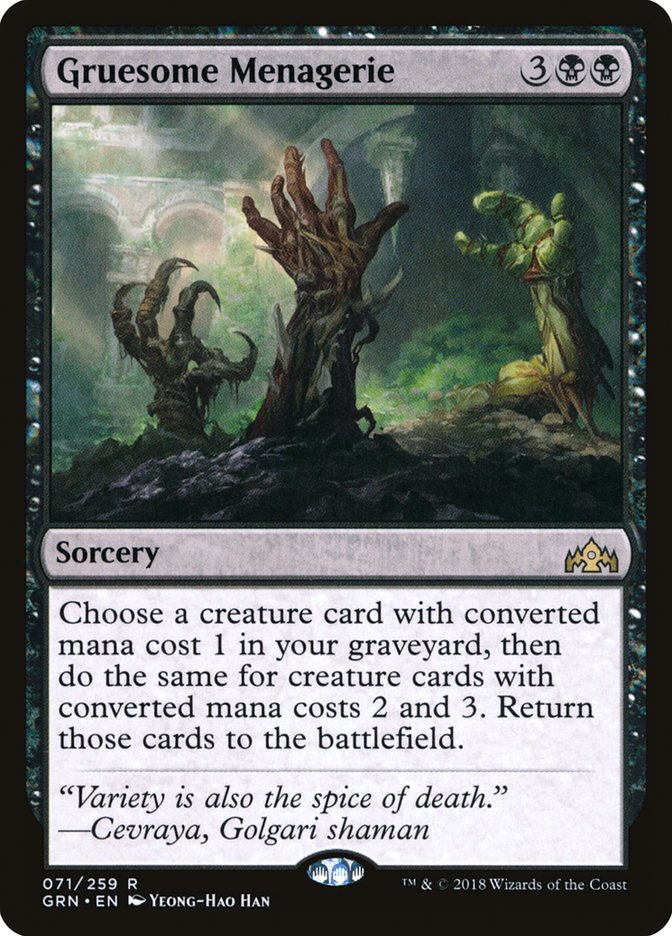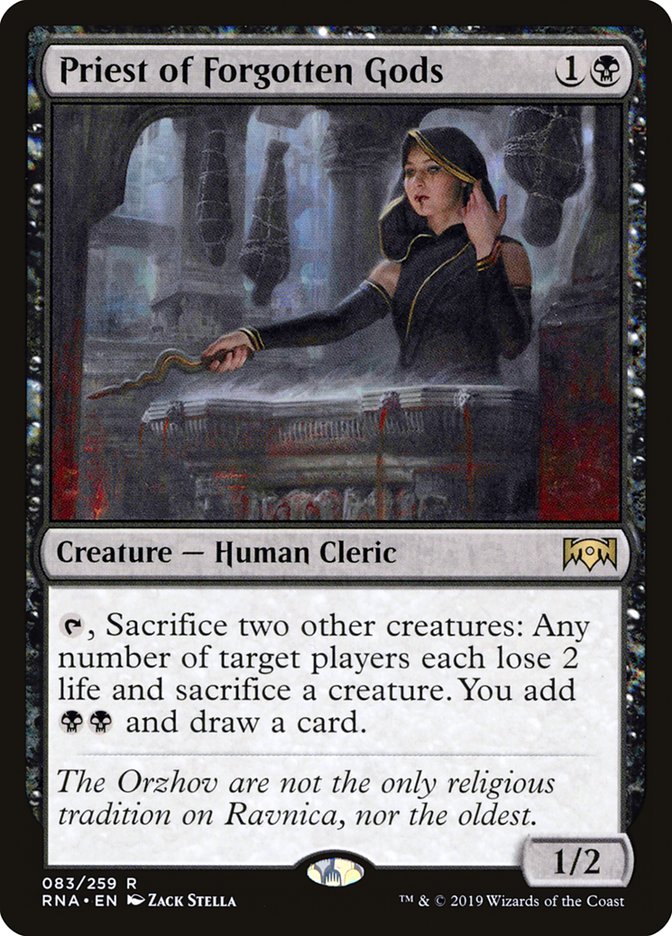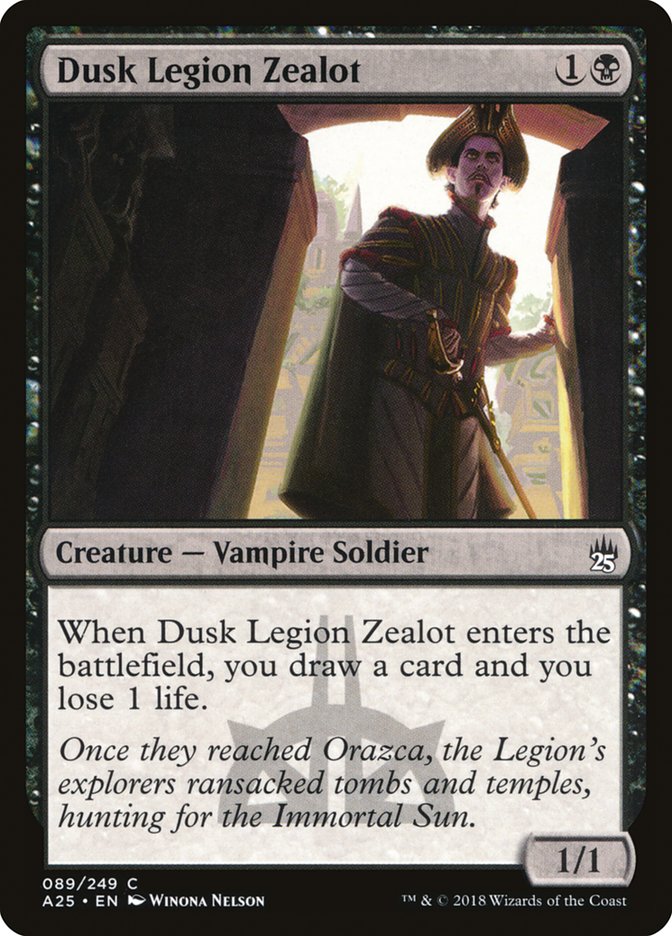The preview season for Guilds of Ravnica was all about figuring
out the five guilds in the set. Which of the many cards that read well for
each guild would live up to the hype and which would fail to perform? What
is the shell that each guild would be built around?
Since Ixalan block was so underpowered, Guilds of Ravnica
was able to define the format. Four of the five guilds from the set played
a major role in shaping the Standard metagame over the last several months,
with Dimir the only one left behind.
Now we have the second set in Magic’s latest visit to Ravnica, with five
new guilds to explore. The last time we were here, Standard became defined
largely by three-color decks, blurring the lines between each guild, but in
order to find the guilds that work well together, we first need to explore
the new guilds to determine their strengths and weaknesses.
For Rakdos and Gruul the goal is going to be aggression, though Rakdos will
do so with small creatures and efficient removal while Gruul will try to
power out larger threats with mana acceleration. Simic continues to be an
enigma, much like the creatures it manages to splice together, though we
know creatures and +1/+1 counters will be involved, and Azorius, much to
the collective sigh of relief of the community, isn’t a Teferi, Hero of
Dominaria-supporting control juggernaut, but a midrange strategy with a Thopter
theme.
There’s still plenty to figure out when it comes to building around these
guilds, but for the most part the path forward for each of them is
straightforward. However, when it comes to the last guild, Orzhov, the path
forward is uncertain.
With the afterlife mechanic, we do know that Orzhov is going to care
somewhat about sacrificing creatures for value and generating creature
tokens. For most people that has meant the potential to return to an
Aristocrats-style deck, but I see several issues with that, preventing such
a deck from re-emerging.
First, the supposed replacement for Blood Artist, Judith, the Scourge Diva,
is going to be difficult to enable. Splashing a third color is easy enough,
but in order to leverage these kinds of effects, it’s important to have
some games where you can play multiple copies, which is prevented by
Judith’s legendary status, and to have games where you’re able to sacrifice
a ton of creatures in one turn to effectively combo kill your opponent.
In order to set up those turns, you need a sacrifice outlet that is
repeatable ad infinitum and neither of the premiere such sacrifice outlets
in Orzhov meet that criterion. Pitiless Pontiff costs one mana to activate
and Priest of Forgotten Gods needs to tap to activate, unlike Cartel
Aristocrat, Falkenrath Aristocrat, and Varolz, the Scar-Striped, which we
had the last time.
Second, Aristocrats decks need to create lots of bodies in order to
leverage those sacrifice outlets, and they had access to one of the best
token-makers of all time in Lingering Souls. The closest we have is History
of Benalia, which lets you apply more pressure, but isn’t as efficient at
enabling sacrifice synergies.
That said, what I do see the Orzhov Syndicate having is versatility.
There’s a strong core of cards that can be built around to make an
aggressive deck, a more controlling midrange deck, and one that is focused
on assembling sacrifice synergies, specifically surrounding Priest of
Forgotten Gods. That core is comprised of the following:
Tithe Taker and Hunted Witness
These are the bread and butter afterlife creatures, even if the latter
doesn’t literally have afterlife. It’s important that these creatures be
cheap, so we can flood the battlefield efficiently, and it’s hard to get
cheaper than one and two mana. Despite being small, these creatures help
Orzhov decks control the battlefield by making it hard for aggressive decks
to clear the way for their attacking creatures or by pressuring control
opponents while offering resilience to sweepers.
And Tithe Taker does even more than that. Its taxing ability makes it
difficult for the opponent to interact with our synergies, and for a more
aggressive list, offers some protection against Settle the Wreckage. I’ve
been impressed by Tithe Taker in a lot of decks thus far, and right now
have it as one of the five best cards in the set. The fact that Orzhov
utilizes it more effectively than any other guild is one of the reasons I
think it can have sustained success in the coming Standard season.
Pitiless Pontiff
It’s not as splashy as Priest of Forgotten Gods, but it also doesn’t ask
for nearly as much effort to utilize and is naturally resilient to removal,
an important quality for a sacrifice outlet since you always want one on
the battlefield. It also allows you to sacrifice at instant speed, an
important quality in the face of removal.
Beyond that, Pitiless Pontiff is another solid body that contributes to
controlling the battlefield. Most people remember the splashy wins with
Aristocrats where Blood Artist triggered eleventy billion times, but the
decks often won via the slow bleed of Cartel Aristocrat entering the red
zone turn after turn with nothing the opponent could do but try to race
back against a deck that was excellent at blocking. Pitiless Pontiff gives
these decks a similar effect that’s also resilient to most sweepers
provided you have a mana to spare so when planning our curves it’s going to
be prudent to load up on twos so this can function as a three-drop.
Ajani, Adversary of Tyrants
It may not be new, but I’m predicting big things for Ajani in the new
Standard. It’s seen marginal play as a sideboard card in Boros Aggro, but
with a load of good new two-drops, several of which also care about +1/+1
counters – see Growth-Chamber Guardian – Ajani looks poised to become a
format staple. In Orzhov decks, it fits the theme of versatility by
providing a threat that can pressure the opponent, gain card advantage, or
return the missing piece of the puzzle for sacrifice synergies.
I particularly like the +1 ability in Orzhov because its creatures are
either hard to answer (Pitiless Pontiff) or not good targets for removal.
(afterlife creatures) The Spirit tokens from afterlife are solid targets as
well.
With this core forming the base for Orzhov, we can go in several different
directions. First up is the straightforward aggressive deck:
Creatures (21)
- 3 Adanto Vanguard
- 2 Dauntless Bodyguard
- 4 Venerated Loxodon
- 4 Hunted Witness
- 4 Tithe Taker
- 4 Pitiless Pontiff
Planeswalkers (3)
Lands (22)
Spells (14)
Sideboard

This list isn’t as explosive as Boros Aggro, but it’s quite resilient to
Deafening Clarion, which is a big plus. It’s also better able to attack
into bigger creatures, either getting around them with flying, pumping
smaller creatures with Ajani, Adversary of Tyrants, or poking with a
Pitiless Pontiff or Adanto Vanguard. Splashing black also allows you to
play a very efficient removal spell in Final Payment, which not only plays
nicely with Hunted Witness and afterlife creatures, but also History of
Benalia, which you can throw away should your opponent use their removal
aggressively on your Knight tokens to limit the effectiveness of the third
chapter.
It’s unclear where the ideal spot on the resilience versus speed spectrum
will be for aggressive decks in the new format, but as the mana gets better
midrange decks will have an easier time stopping early aggression, and
white aggro decks don’t have the reach to punish manabases that are heavy
in shocklands.
Aristocrats where Blood Artist triggered eleventy billion times, but the
decks often won via the slow bleed of Cartel Aristocrat entering the red
zone…
Note that this deck isn’t relying on sacrifice synergies to operate. It has
enough enablers to take advantage of Pitiless Pontiff as a powerful
creature, and those enablers are solid playables on their own. This is a
classic aggressive deck that’s built to fight through removal, so look to
curve out when possible while being mindful of sweepers.
The second list goes much bigger, utilizing one of the most powerful Orzhov
cards in the set in an unusual place:
Creatures (24)
- 4 Midnight Reaper
- 4 Hunted Witness
- 3 Plaguecrafter
- 4 Tithe Taker
- 3 Seraph of the Scales
- 4 Pitiless Pontiff
- 2 Ministrant of Obligation
Planeswalkers (3)
Lands (24)
Spells (9)

Much has been made of Kaya’s Wrath in a control deck, but making the mana
work with double-blue counterspells like Absorb and Sinister Sabotage is
going to be tough. This deck plays Kaya’s Wrath in a two-color manabase,
but also with over twenty creatures, which is going to take many players by
surprise.
Fortunately, most of those creatures don’t mind dying, so in the aftermath
you’re going to have a battlefield full of tokens and potentially a stocked
hand from Midnight Reaper, while gaining the life back from the second part
of Kaya’s Wrath.
Since this deck is going to kill its own creatures so often, I’ve included
both Ministrant of Obligation and Seraph of the Scales as creatures with
afterlife 2, though the latter is powerful enough to stand on its own
stats.
As the game goes longer, you’ll want some ways to take advantage of the
many tokens lying around. Ajani fills that role nicely, but we also have
two copies of Ethereal Absolution, a very powerful effect that stops
Merfolk Branchwalker and Jadelight Ranger before they explore, and turns
your army of Spirits into a force that will end the game very quickly,
limiting the time your opponent has to recover from Kaya’s Wrath. This spot
could be filled by something splashy like Divine Visitation, but the
effective double anthem is very powerful in a deck that generates as many
tokens as this one, and Absolution is a much better topdeck on an empty
battlefield.
Of course, maindecking so much removal means we need a plan for control
decks, so you can pivot with the sideboard copies of History of Benalia
into a more aggressive shell, a tactic we’ve seen out of control decks for
months now.
And lastly, I have a synergy-driven build that takes advantage of Priest of
Forgotten Gods:
Creatures (31)
- 4 Dusk Legion Zealot
- 4 Midnight Reaper
- 4 Hunted Witness
- 3 Plaguecrafter
- 4 Tithe Taker
- 3 Pitiless Pontiff
- 2 Gutterbones
- 3 Ministrant of Obligation
- 4 Priest of Forgotten Gods
Planeswalkers (3)
Lands (23)
Spells (3)
Sideboard

There’s no denying that Priest is a very powerful effect, but it needs a
lot of work to get going. The sacrifice fodder is easy of find in Orzhov,
but you really want to find a good use for the extra mana the card can
generate. There are two cards here that fill that role.
The first, and most obvious, is Gruesome Menagerie. When you untap with
Priest and a full battlefield, this is the card that can generate an
obscene amount of card advantage, putting you very far ahead in total
resources without sacrificing and positional advantage. It plays very well
with the condensed curve this deck wants to play with and is a great
topdeck late when you need to assemble the synergies again in the face of
disruption. Honestly, this is as much a Gruesome Menagerie deck as it is a
Priest of Forgotten Gods deck, and if the latter lives up to the hype it’s
currently receiving, I expect it to be in no small part due to how well it
plays with the former.
The second and more subtle mana sink is Dusk Legion Zealot. At two mana
it’s not much of a traditional mana sink, but it’s an important part of how
this deck sequences. Curving a one-drop into Priest of Forgotten Gods sets
you up for a powerful turn 3, especially with Ministrant of Obligations.
But in order to take full advantage of that sequence, you’ll want a
two-mana play that’s castable off of BB. A second Priest is possible, but
not ideal, and both Pitiless Pontiff and Tithe Taker require white mana, so
Dusk Legion Zealot plays a key role in how this deck curves out while also
being solid sacrifice fodder in its own right.
That mana can also be sunk into returning Gutterbones, which mainly
functions here as a secondary one-drop to maximize Gruesome Menagerie, but
it’s convenient that Priest of Forgotten Gods both enables spectacle and
provides the mana to recur it – so convenient that I doubt it’s a
coincidence.
Starting from the same core of approximately fifteen cards, we can build
three vastly different decks that can attack the format in a multitude of
ways. Just recently, Golgari was the most successful guild of Guilds of Ravnica Standard because it was the most versatile, and
I see a lot of those same traits in Orzhov. With all ten guilds available I
expect plenty of experimentation with three-color decks, but this guild has
the tools to stand on its own.


